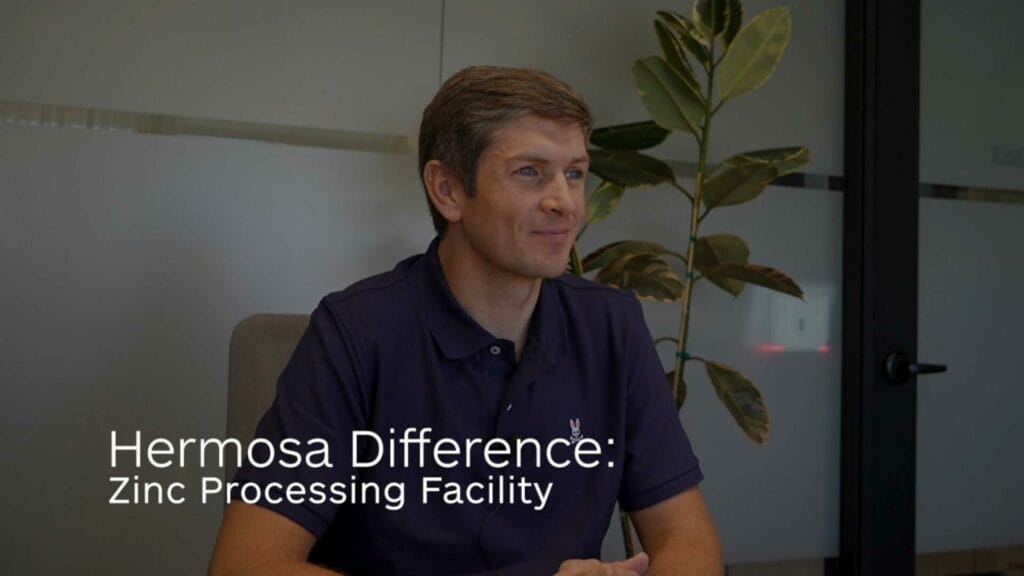
“Hermosa is a rare opportunity for us to start with a blank sheet of paper and design the infrastructure, the processes, and the culture we want to operate within.” – Matthew Novak, Metallurgy and laboratory services Superintendent
Few mining projects offer the chance to design a processing facility from the ground up—but at South32 Hermosa, that’s exactly what’s happening.
Rather than adapting to established infrastructure systems, the processing team is building something smarter and tailored to today’s needs for energy efficiency, environmental stewardship, and operational flexibility.
With a focus on minimizing impact and maximizing performance, the zinc processing facility is being engineered to be a best practice on producing critical minerals—both for the company and for the communities that surround it.
With proven technology methods, we’re adapting to meet modern environmental and operational standards that sets the facility apart.
Rather than using traditional surface stockpiles, Hermosa will store feed material in a large coarse ore silo—a method that reduces dust and helps keep materials off the ground. On the back end, the facility will load product directly into sealed containers using technology adapted from the automotive industry. Each container will have a lid and be washed before it ever leaves the building, which eliminates the need for a concentrate shed and reduces the risk of contamination or exposure.
This mindset is carried through the rest of the facility’s design, with the team choosing:
- A vertical tower mill over a conventional ball mill for energy-efficient grinding
- A shared concentrate filter for both zinc and lead
- Jameson cells for flotation—delivering compact and efficient mineral separation
One of the more unique challenges in mineral processing is variability. Unlike traditional manufacturing, where inputs are tightly controlled, Hermosa’s ore body can change from day to day.
That’s why the processing facility is being designed to handle changes in ore quality and composition without compromising safety, efficiency, or product quality. It is expected to produce high-grade concentrates that meet industry standards while using less water, power, and reagents than conventional facilities. This facility plays a vital role in our plan to responsibly produce minerals critical to the energy transition at Hermosa. By converting mined ore into a saleable product on-site, the plant helps generate value that flows back into the local economy—supporting jobs, community investment, and long-term regional growth.